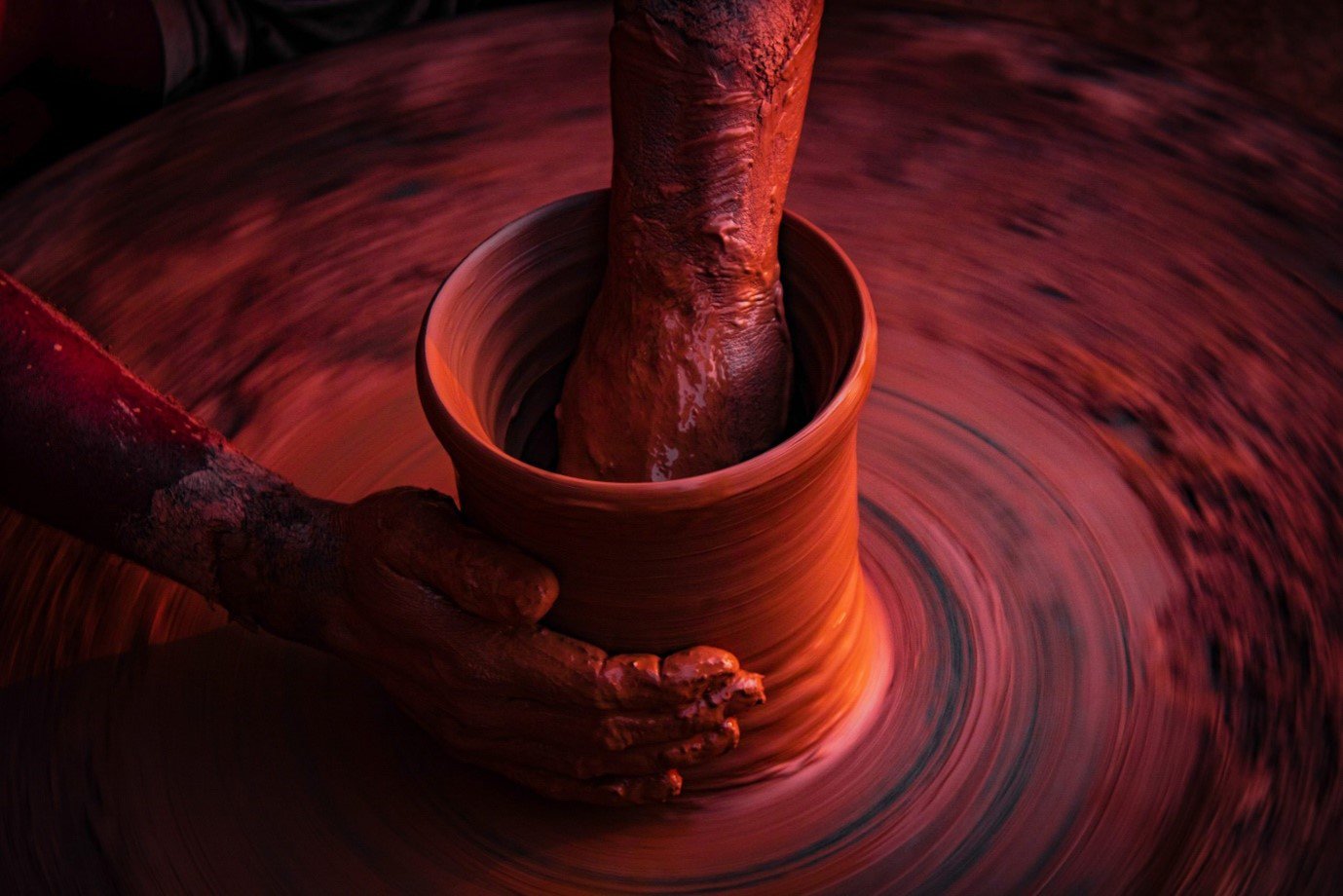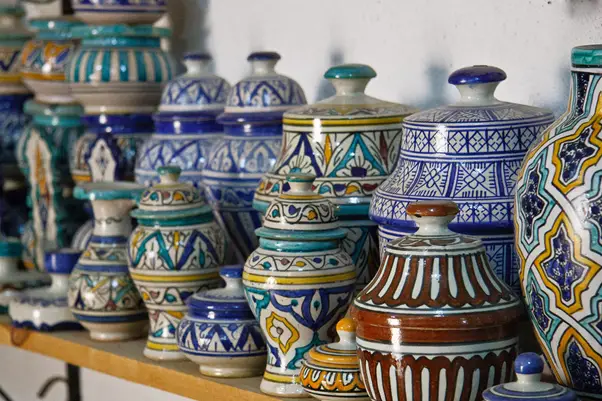Pottery involves the use of clay in an artful way that brings out pottery creations. Potters use specific methods to transform clay into a decorative object or vessel. The different methods they use for this purpose are modeling, drying, and firing. Clay occurs naturally on Earth due to the decomposition of the Earth’s crust. Usually, this process takes millions of years to conclude through the agents of weathering.
More than clay, clay bodies are used in pottery. Clay bodies display different properties than that of clay. This is because clay bodies consist of several other ingredients in addition to clay. These materials play an essential role in the formation of clay objects from pottery. Read on to learn more about the different kinds of raw materials used in pottery.
The composition of clay used in pottery
Before you proceed to know more about the different kinds of raw materials used in pottery, it is imperative to understand the composition of clay used in it. It consists of 14% water, 46% silicon oxide, and 40% aluminum oxide.
Raw materials used in pottery
Along with raw materials, tools also play an important role in pottery. A potter may choose the raw materials for making pottery objects depending on the availability of tools and vice-versa. The basic raw materials used in pottery are clay and glazes.
1. Clay
Clay is the primary raw material in ceramic and other kinds of pottery. Most potters use it due to its widespread availability. They use clays of distinct combinations to make different objects in ceramic pottery. Along with silica, they use other minerals in various proportions to make different combinations of clay. The list of such forms of clay is fire clay, ball clay, porcelain, stoneware, and earthenware.

The common examples of ready-made clay used for pottery are China clay, Bikaner clay, phosphate clay, and Quart’s clay. Molding enables potters to give a definite shape when they make ceramic articles. Potters prepare molds by using POP and use a simple step to prepare the latter. They add the requisite amount of water to POP and let it absorb the added water for some time to prepare molds.
Oftentimes, you can find potters wearing a masks while working with clay. This is primarily to protect themselves from the dust of the clay, which consists of silica. If inhaled, it can cause serious damage to the lungs.
Types of clay
| Type of clay | Characteristics |
| Shale Clay | It has tiny particles and can be easily broken down into small and thin pieces. |
| Earthenware clay | It is smooth and porous. Earthenware clay is mostly used for creating pottery articles with a glazed finish. |
| Polymer clay | Polymer clay has the ability to hold water and oil. Pottery articles made of polymer clay can be shaped easily due to their plasticity. |
| Ball clay | It is a mixture of lime and silica and is extracted from feldspar rocks. They are best suited for making non-porous vitrified products such as porcelain. |
| Kaolinite | This clay is best suited for making porcelain creations. When treated with heat, it turns out to be hard. |
| Stoneware clay | It is made of shale or sandstone and is a durable clay form that becomes hard when fired in a kiln. |
| Fire Clay | Fire clay is mainly used in refractories and has low thermal expansion and conductivity. Fire clay is impermeable and becomes hard when treated with heat in a kiln. |
2. Glazes
Glazes act as a waterproofing material for pottery objects. They add strength to the pottery items that potters make. To harden clay, potters fire it. At this time, the glaze becomes harder and settles on the surface of the clay.
Different glazes harden at distinct temperatures. Potters who make use of glazes must know about the temperature at which a glaze they use would harden. A specific type of glaze rehardens only at an optimum temperature. Otherwise, it may not harden in the desired way, which can affect the quality of the resulting object. To gain a good understanding of the optimum temperature for a glaze, potters use a cone system.
3. Additives
Despite the concept of pottery primarily revolving around the use of clay, it is not just about clay. To enhance the workability of the resulting objects, potters also consider adding some non-clay materials to clay. Prominent among them are grog, sand, paper pulp, and nylon fibers.
A potter chooses a specific kind of additive, depending on the type of pottery object they use to make. Notwithstanding the distinctive properties of additives, potters use them to attain a key objective. They use additives to extrude clay quickly in a simple way. Additives make the clay soft and eliminate the need for an additional amount of water.
4. Colors
Pottery colors make a big difference to the appearance of pottery objects. For coloring pottery items, potters primarily use chemical oxide colors featuring different elements and compounds. These include nickel oxide, iron oxide, chromium oxide, cobalt carbonate or cobalt, zinc, iron, and more.
Colors such as green, brown, pink, yellow, and red come from a single source. The source from which potters obtain these colors is Chromium Oxide. For obtaining browns and greys, potters use Nickel Oxide. These days you can also buy assorted pottery glaze colors from Amazon to make the pottery creations look amazing and bright.
5. Pottery wheels
It is one of the most important tools in making pottery articles. Pottery wheels are of two types-Electric and manual powered. Hand-building pottery articles are not as easy as one may think them to be and require a lot of creativity and excellence of hands. Pottery wheels have come out as an innovation in the pottery industry that has made it easy for potters to deal with radial symmetry getting over hand building.
Final thoughts
While clay is the primary raw material for pottery, it also necessitates the use of other raw materials for the creation of different pottery items. Clay can be molded in different ways but using different raw materials, along with the right tools and techniques, is necessary for producing high-quality clay objects.







